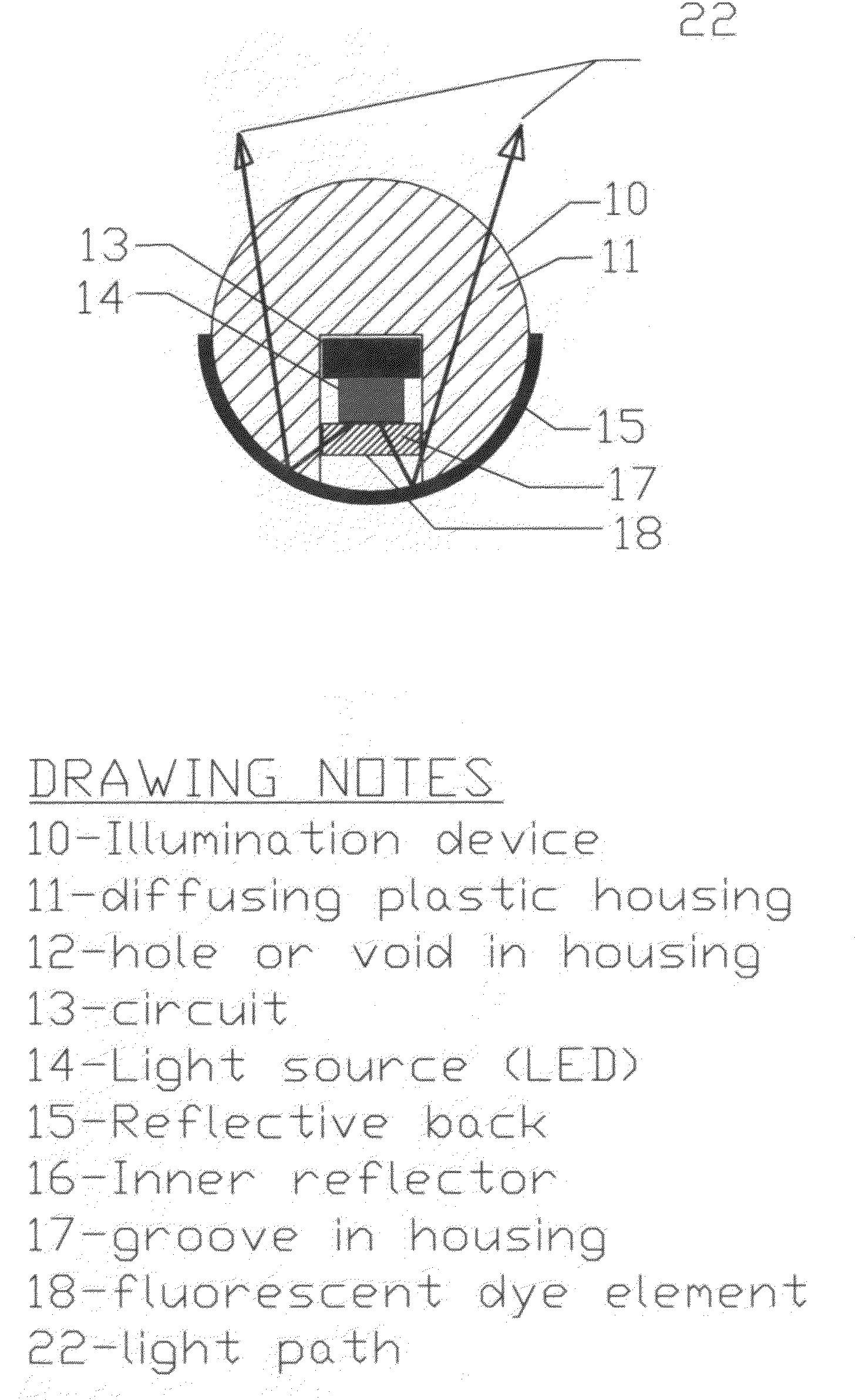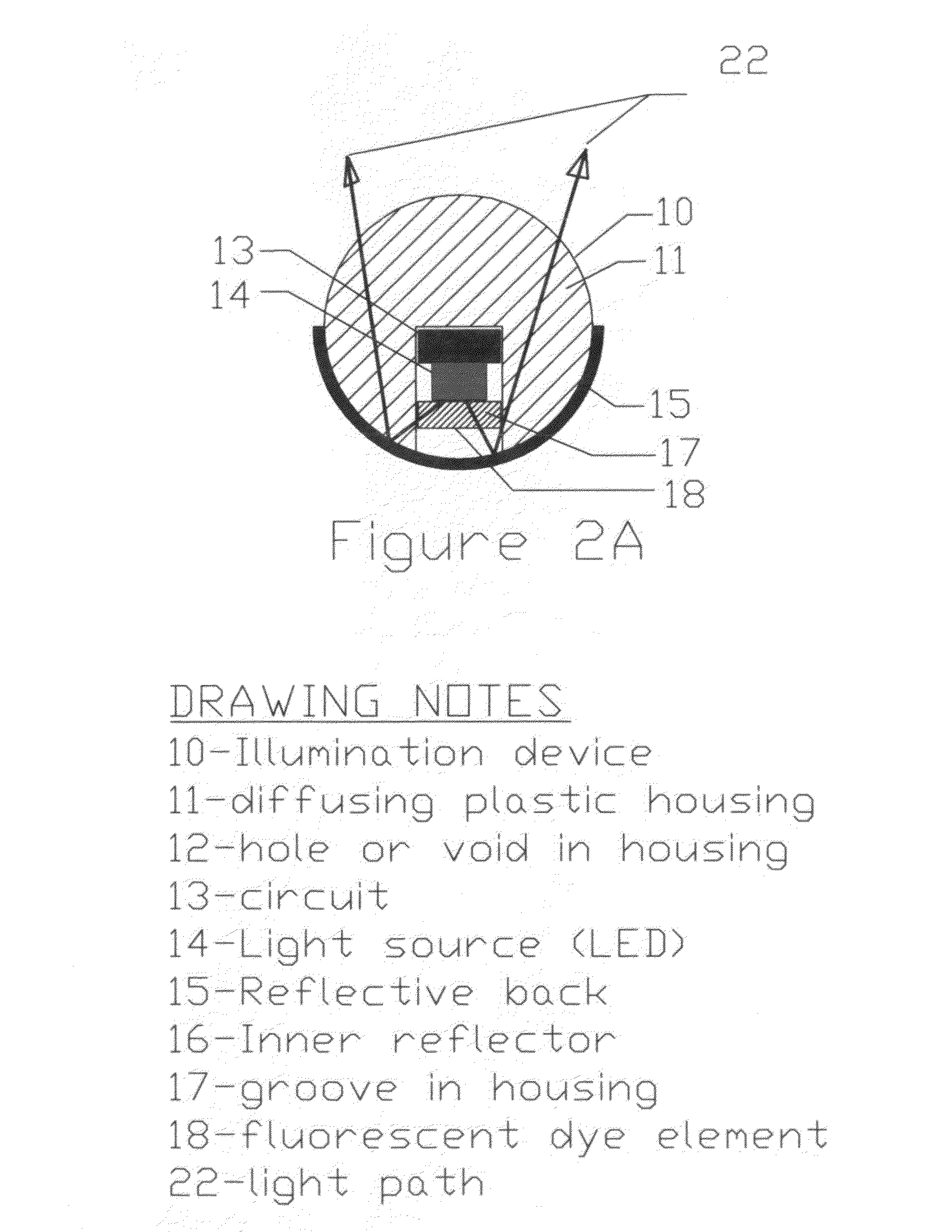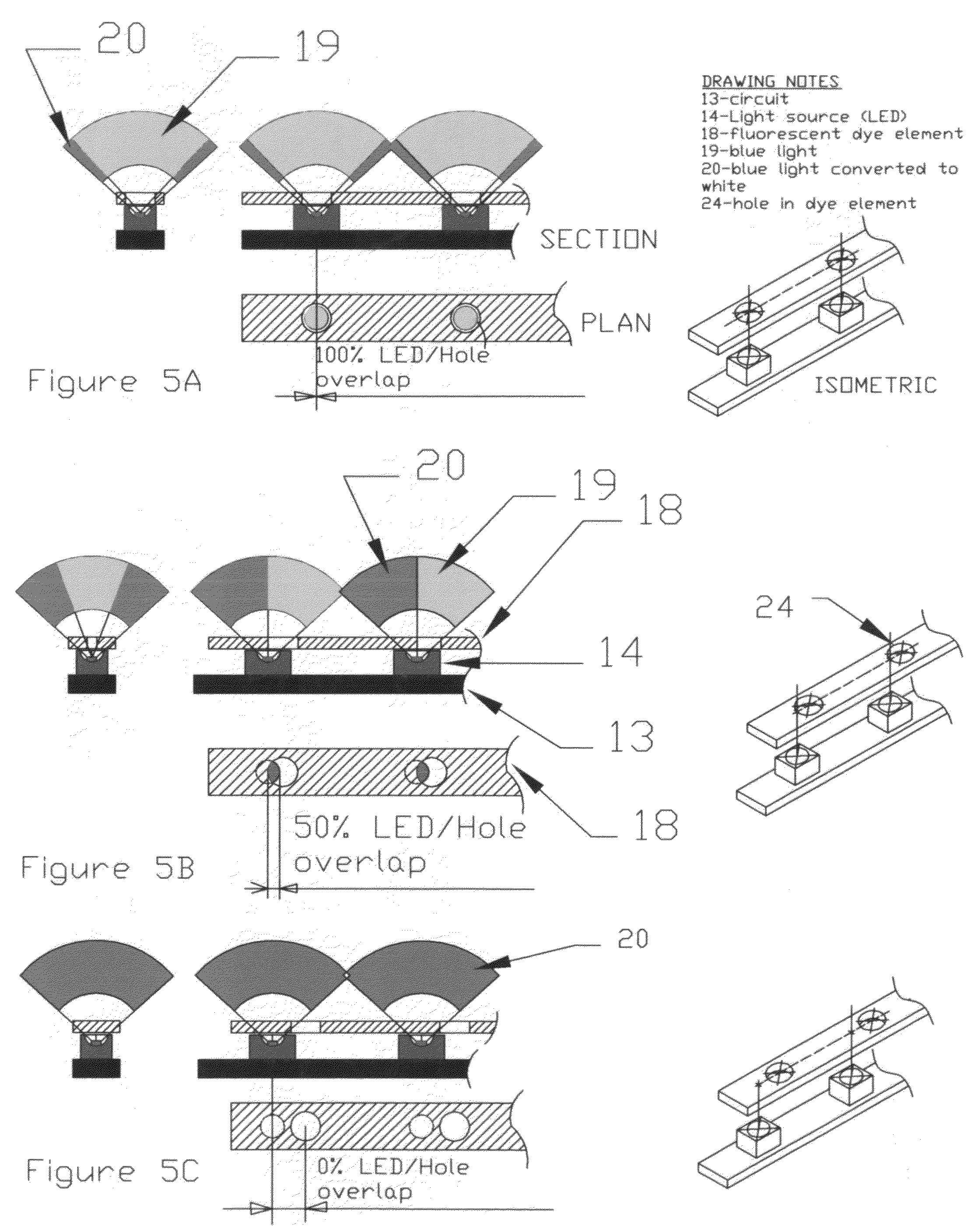Illumination device with mechanically adjustable color conversion system
a technology of color conversion system and illumination device, which is applied in the direction of lighting device details, spectral modifiers, lighting and heating apparatus, etc., can solve problems such as difficulty, and achieve the effects of uniform concentration, easy adjustment, and easy to change the hue or degree of ligh
- Summary
- Abstract
- Description
- Claims
- Application Information
AI Technical Summary
Benefits of technology
Problems solved by technology
Method used
Image
Examples
Embodiment Construction
[0021]The invention involves the mechanical movement of a fluorescent dye impregnated element with variable densities or volumes of dye against a light source to adjust the amount of fluorescent dye that interacts with the light with the end goal of carefully controlling the final light hue output. This dyed element may be made of clear acrylic. FIGS. 5A, 5B and 5C show details of how the present invention works in a linear lighting situation. FIG. 2A shows a cross section thru an exemplary linear light system incorporating the invention. This is but one of many possible useful linear light systems that could benefit from this concept. FIGS. 6A, 6B and 6C show details on how the present invention works in a flat array.
[0022]In FIGS. 5A, 5B and 5C we see a flat rectangular bar of fluorescent dye impregnated plastic 18 that sits on top of a series of evenly spaced surface mounted blue light LEDs 14 that are mounted on a circuit board 13 (any color LED may be used). The bar is snug to ...
PUM
 Login to View More
Login to View More Abstract
Description
Claims
Application Information
 Login to View More
Login to View More - R&D
- Intellectual Property
- Life Sciences
- Materials
- Tech Scout
- Unparalleled Data Quality
- Higher Quality Content
- 60% Fewer Hallucinations
Browse by: Latest US Patents, China's latest patents, Technical Efficacy Thesaurus, Application Domain, Technology Topic, Popular Technical Reports.
© 2025 PatSnap. All rights reserved.Legal|Privacy policy|Modern Slavery Act Transparency Statement|Sitemap|About US| Contact US: help@patsnap.com



